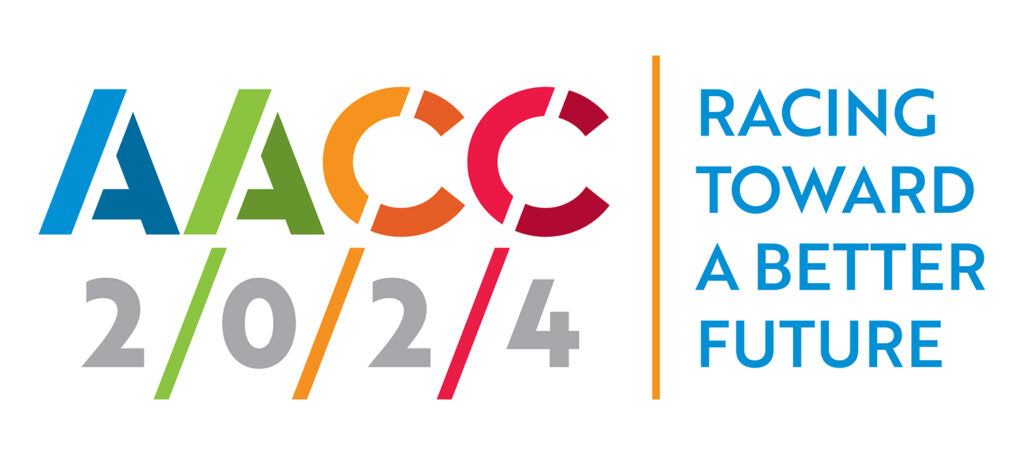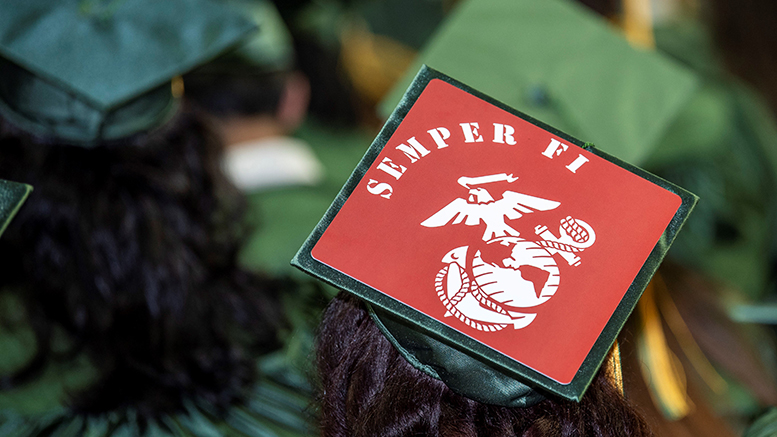Editor’s note: This article kicks off a series that will examine some of the topics and sessions that will be featured at the American Association of Community Colleges’ annual convention, which will be held April 5-9 in Louisville, Kentucky. Register today.
Not every community college has the headquarters of the U.S. Armed Forces in or near its backyard. But many are located near local military bases, and with online education opportunities significantly more prevalent, location isn’t as important as it once was.

Northern Virginia Community College (NOVA) has leveraged the geography of its home base — as well as programming in areas like data intelligence and cybersecurity — to launch promising partnerships with both the U.S. Marine Corps and U.S. Navy, leading to military training and education for both active duty and reserves locally, nationally and internationally.
These partnerships, which have resulted in a data intelligence course sequence focused for Marines and the school’s subsequent involvement in the establishment of the U.S. Naval Community College, where it provides cybersecurity instruction for service members, will be the topic of a session during AACC 2024 next month.
The few, the proud
The military partnerships started about six years ago with an MOS (military occupational specialties)-to-degree program with the Marines that NOVA reverse-mapped against its courses to establish credit-for-prior-learning, says Chad Knights, vice president of information and engineering technologies (IET) and college computing.
Paula Ford, IET dean at NOVA’s Regional Center for Workforce Education and Training, says the Marines approached the college initially because they wanted to find a way for military credits to count for something other than physical education or general electives.
“A lot of them were being trained for a year, versus our semester format, and getting well beyond the training that give them in the classroom in one semester,” she says. “And then the Marines said, ‘Why are we duplicating what you guys are already doing? You guys are already our training in the IT piece of it — so why don’t we let you do the training instead of us creating all this curriculum and hiring instructors?”
The partners mapped MOSs to about 15 corresponding industry certifications to ensure that the transferred classes, and their learning outcomes, were an exact match, Ford says. NOVA did this crossover a little differently than many schools, mapping course by course rather than by career certificate or degree, enabling service members to gain credits for individual courses and thus creating academic flexibility, Ford says.
“If they decided that they’re going down the IT track, and then they get out of the military and realize IT is not for them, they still have the credit and the courses that they could apply to another degree,” she says.
Data Intelligence
The broader MOS mapping work expanded into a deeper relationship with the Marine Corps, through which NOVA built out what Knights believes is a first-of-its-kind program in which enlisted service members complete training in data intelligence based on assigned orders, aimed to complete the data intelligence engineer MOS, Knights says.
“They basically contracted with us to build the curriculum and offered it as a program to those Marines,” he says. “They did a perfect crosswalk with us for courses that actually we didn’t have yet. Based on this relationship we had, we benefited as a college because we got a real-world use-case for how you need applied data analytics and machine learning.”
The school built the first machine learning and data analytics courses in the state’s community college system, which will be germane not only for the military students but the overall student body as AI and machine learning interest explodes, Knights says.
“It really got our foot in the door in that space,” he says.
The fifth cohort of Marines are currently taking courses at NOVA, Ford says. They’re brought in for two weeks beforehand at Quantico to level-set all students with the same prerequisite knowledge.
“And so they come to us already knowing what they’re going to work on, and they give them a project,” she says. “Something that’s going to be similar to what they’re going to do in the workforce.”
And they’ve refined the program over time. For example, there was originally a cloud computing course, but the Marines told NOVA it wasn’t providing a significant benefit, so the college nixed it. Now there’s a second Python programming course instead, Knights says.
“We built in another course that met the need,” he says. “It gave us a great test-bed to build this program and fine-tune it.”
Within the last six months, NOVA has begun offering a career study certificate in artificial intelligence and data analytics, available not just to service members but the overall student population, he adds.
In the Navy
The success with the Marines helped lead to the involvement with the U.S. Naval Community College, Knights says.
“It’s all about best-foot forward, and making sure you’re ready when opportunity is there,” he says. “That is what landed us and got us in a good position to apply and be successful when the Navy put out a call for schools to support the build-out of the U.S. Naval Community College. And so on that relationship right now, as they’re getting their feet on the ground and forming the foundation of what that new school looks like, working through accreditation … they wanted to start creating their pipeline, especially in high-demand fields.”
NOVA’s nationally recognized cybersecurity program seemed like an ideal fit, and the Navy agreed. The second cohort of about 240 entered this spring. The courses for that program are entirely online and asynchronous, which means that students can access it from everywhere in the world at any time — including while on the high seas, if they can get reception.
“We’re the only community college offering cyber through this model with the U.S. Naval Community College,” Knights says. “There’s a lot of opportunity that I think we can help build, not just in the education piece, but also in the workforce development and planning piece, about what these students can do when they go back to the U.S. Navy.”
Ford notes that NOVA needed to provide e-books rather than textbooks, given that students often would be on ships. She also suggests workarounds for situations where connection speeds become an issue. They continue to meet about once every two weeks to discuss ways to make the arrangement work more smoothly.
Going forward, NOVA hopes to create 2+2 relationships with four-year schools for students who want to go further, although those will require certain understandings, Ford says.
“The one thing we’ve also learned through this is the need for faculty to be more flexible with the students because a lot of the Navy students … go out there on a ship for a week or two weeks and then come back,” she says. “So it’s more the flexibility of the faculty to allow them to work ahead, or make up work when they come back so that they’re successful.”
Advice for others
For other colleges interested in forging military connections, Knights recommends to start as NOVA did, mapping credentials that potential students are earning at base into academic credit to be able to provide credit for prior learning.
“Every accrediting body values and accepts that as a mode of how you can transfer credit back and forth between non-credit and credit entities,” he says.
The need for flexibility and targeting the particular needs of enlisted service members is also key, Knights says.
“It is about effectively establishing the trust that you need, with those installations you have within our region,” he says. “It can’t be transient. It can’t just be like, ‘Yeah, let’s go see the base once a year.’ These were bi-weekly conversations that we were having with the Marine Corps.”
Community colleges are in the best position to respond to the quick-changing needs of any industry partners, including the military, Knights says.
“You assess needs for them, and then you figure out how you can effectively scale that into a program,” he says. “And that is the beauty of most of our military partners. They have scale.”
Knights would encourage colleges to look at their strengths, whether that’s logistics, mechanics, automotive or advanced manufacturing, and think about what they have to offer, with the caveat that many trade-based course sequences can only be offered physically to local bases.
“Those are not ones that scale well to asynchronous” delivery, he says. “There’s several different pathways that you can think about, in terms of what are some of the needs that our region may have, that you could engage them in conversations about. … It’s got to start somewhere, to be able to establish that foundation to kick off this kind of partnership.”
Military partnerships also require internal institutional buy-in to succeed, especially at the leadership level, Knights says.
“Some of the challenges that we face weren’t external, they were internal — about what curriculum we were going to be able to change, what opportunities and pathways could we offer, how would we managed missions, how we manage their advising, how would you manage some of the transfer of courses that didn’t need a standard format?” he says. “All of that required internal social-emotional IQ to be able to navigate your own bureaucracy, your own institution to make sure that these kinds of partnerships can work.”

